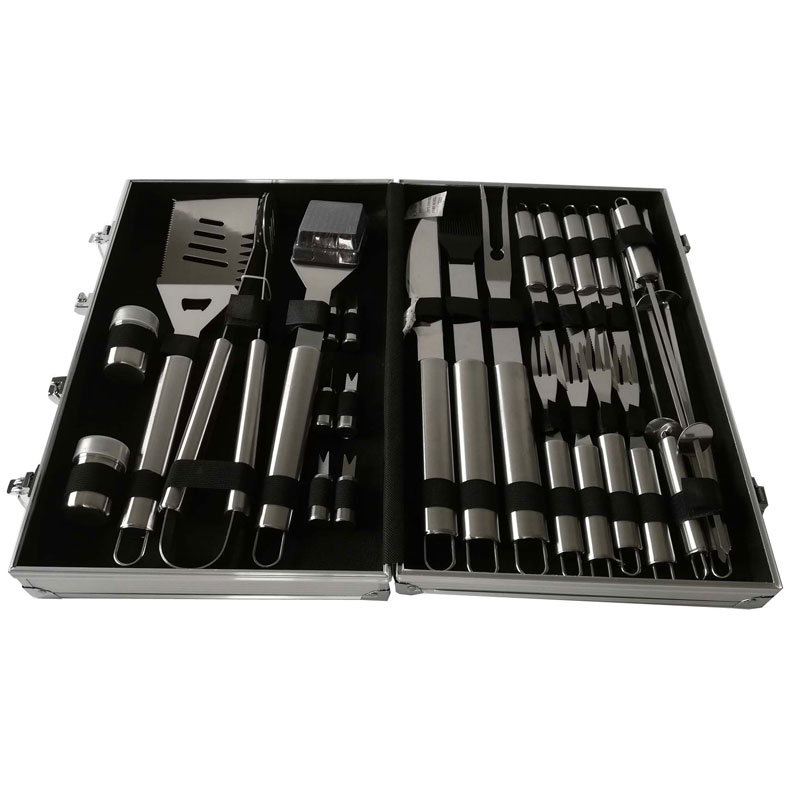Is your summer barbecue eating up forests in South America? - wood charcoal briquettes
by:Longzhao BBQ
2020-05-08

London, July 9
Thomson Reuters Foundation-
A study says supermarket chains in Europe and the United States should look into the sources of charcoal used for barbecues to ensure that they do not contribute to large-scale forest cleanup, which drives indigenous people in Paraguay out of their land.
A report from Earthsight, UK
According to the Environmental Investigation team, many popular charcoal brands sold at gas stations and supermarkets are produced in Chaco's dry tropical forests
But it's not marked like this.
Chaco, which has a large number of wildlife including Jaguar and giant mao, was described by David aitborough as "one of the last great wilderness areas in the world ", it is home to many of Paraguay's 110,000 indigenous people.
But as South American countries become one of the world's largest exporters of charcoal, Earthsight is concerned that much of this charcoal comes from beef on cut-down Chaco land, but consumers are not aware of it.
Agriculture accounts for a large part of Paraguay's economy. beef and soybeans are the main export products of Paraguay. by 2020, there will be 20 million cows, up from about 13 million cows. according to the Food and Agriculture Organization (FAO).
"As industrial agriculture moves to the pristine wilderness, trees are being cut down and are turning into charcoal to meet the needs of Europe," Earthsight's report said . ".
"Chaco's dry tropical forests are destroyed faster than any other forest on Earth.
"While the Constitution of Paraguay recognizes the rights of indigenous peoples, according to a report from the 2015 United Nations, they have no right to refuse to agree to intensive agricultural projects on their customary lands.
The Global Forest Watch, which uses satellite data to monitor tree cover around the world, has identified Paraguay as one of the world's notable deforestation hotspots.
The University of Maryland's 2017 analysis data for the 12-year data as of 2012 estimated that Chaco's forest loss this year exceeded 200,000 hectares, or 2,000 square kilometers --
The size of Manhattan every two weeks.
Earthsight's survey shows that Paraguay, which sells and distributes bulk charcoal to Europe and the United States, publicly promotes the source of this fuel --
But dealers in Europe and the United States don't think so.
Dolimex, one of Paraguay's largest exporters, said on its website, "100% of our raw materials are from the forests of Chaco, Paraguay, where there are abundant high-density species, such as the White Whale (tree)”.
But Earthsight said that when distributors who buy and sell from Paraguay to supermarkets and gas stations in the United States and Europe package bulk products into local brand packaging, there is often no mention of Chaco, in some cases, the bag is marked as coming from "recycled wood ". “(Some)
Dealers peddling false and misleading claims about the sustainability of products that flood European supermarket shelves, obscuring their role in this environmental crisis, "Earthsight said.
Dolimex could not be reached for comment immediately.
Charcoal is made by cooking wood in a large brick furnace in a low oxygen environment, burning compounds such as water, methane, hydrogen and tar, leaving black blocks and powder.
Earthsight says itthe-
Ground research tracks charcoal samples sold in Europe, dating back to brick stoves in Chaco forest operated by Bricapar, Paraguay's largest charcoal exporter.
Bricapar's distribution website shows photos of familiar Europe and the United StatesS.
There is a logo on the charcoal bag packaged by the local brand that says that its charcoal coal balls are made from "sources of recycling and control.
Bricapar did not immediately respond to requests for comment.
The Earth Watch report says pastures are the main driving force behind Chaco deforestation, and charcoal production provides a profitable incentive to prove this growth
Upfront costs of clearing forests for livestock.
But Chaco is home to many indigenous tribes who live in tropical forests for a long time and are sheltered.
For example, the Ayoreo community, which is considered the last "untouched" indigenous group outside the Amazon basin.
Earthsight reports that European consumers need to ensure that they "do not inadvertently cause losses to precious Chaco", which requires action by major supermarkets and the EU.
The report concluded: "Supermarkets must investigate the sources of related products such as charcoal and beef more thoroughly and be more skeptical about the sustainability requirements put forward by suppliers (
Said Paola Totaro, editor of Belinda gold;
Please thank the Thomson Reuters Foundation, a Thomson Reuters charity that covers humanitarian news, women's rights, trafficking, property rights and climate change. Visit news. trust. org)
Custom message








